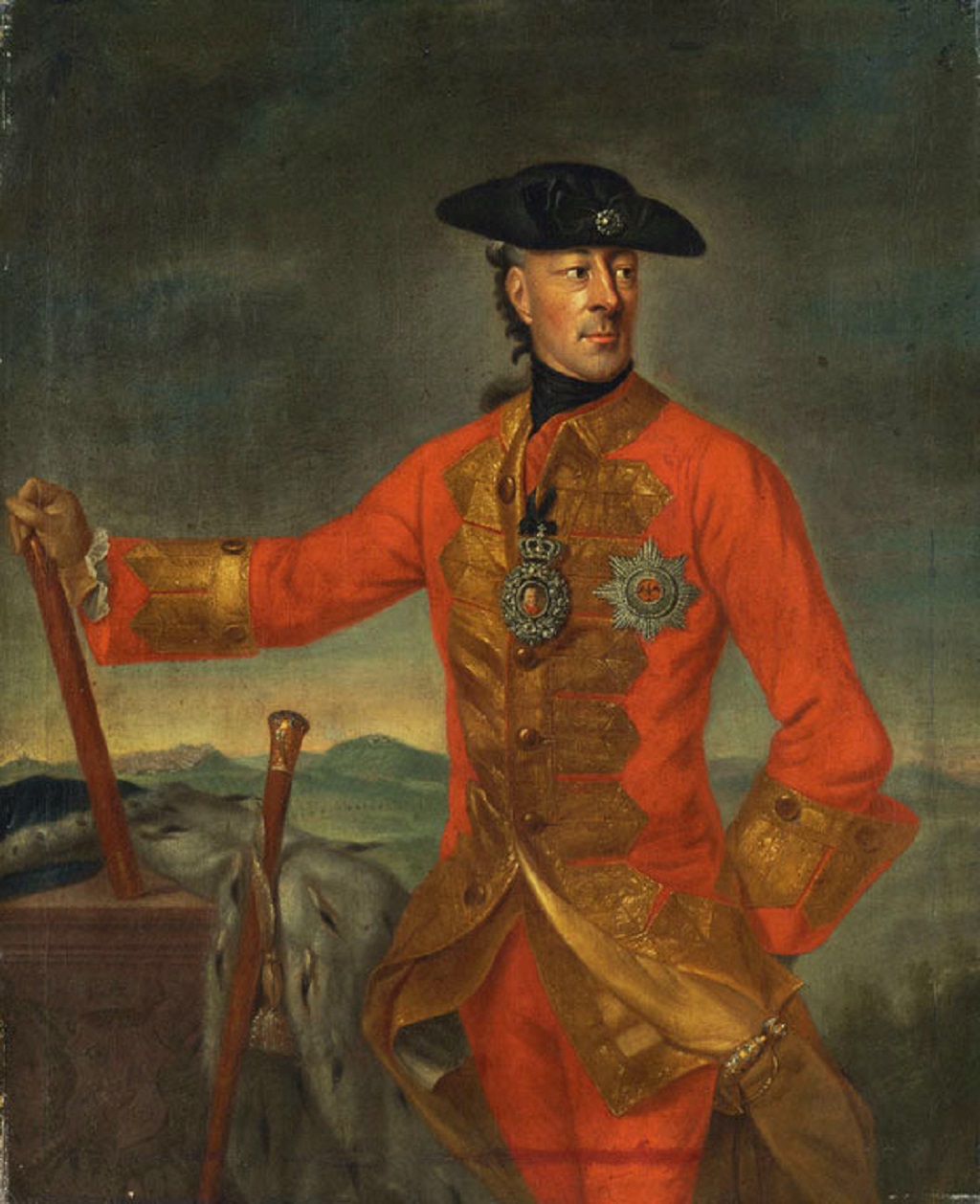Count of Lippe
Friedrich Wilhelm Ernst Von Shaumburg-Lippe was born on January 9, 1724 in London, where he remained until he was five years old. Studied in Leyden (Netherlands), Genéve (Switzerland) and in Montpellier (France). He dedicated himself to German and rationalist philosophy, being an apologist that everything should be directed towards good and progress, revealing an early taste for physics, mathematics, astronomy and the exact sciences, becoming a self-taught man.
In 1742 he completed eighteen years and had the opportunity to obtain positions in the service of the Emperor and in foreign courts. The following year he participated with his father in the Battle of Dettiragen alongside the Dutch. At the age of twenty he already had a considerable reputation with society as a philosopher. In 1744 he enlisted in the English navy, however, he had to abandon his career for health reasons. In 1748 his father dies and in the following year he obtained the title of Lord of the County of Schaumbourg-Lippe. In 1757 he reunited his troops with the Hanoverian Army, of which he was Grand Master of Artillery, and after two years he was appointed Commander and Director of Artillery for the allied armies of Germany.
On November 12, 1765, he married Countess Maria Bárbara Leonor with whom he had his only daughter, Emília. The latter died at the age of eighteen and his wife died two years later.
Lippe was a true genius, a man who was interested in Art, Religion and Philosophy having been sublime in Military Art where he demonstrated his commitment and dedication, creating new war strategies as well as the establishment of regulations and instructions.
He died on September 10, 1777 at the age of fifty-three, joining the mausoleum where his wife and daughter were already at Baum Palace in Schamburger Wald.

His action in Portugal
In 1762, the Count of Lippe was called to Portugal by the Marquis of Pombal and by indication of the King of England. He was given the service of reorganizing the Portuguese Army and commanding Portuguese-British troops, on the verge of a new war with the neighboring enemy.
Lippe disembarked in Lisbon on July 3, accompanied by several German officers who came as his assistants, among whom were Prince Carlos Luís Frederico, Duke of Mecklenburg, Colonel Böhm and captains Riepe, Tileman, Colson, Ferdinand Biesterfeld and Ruxleben. He settles in Pedrouços with his officers and the Marquis of Pombal assigns him Miguel de Arriaga as secretary and interpreter.
When Lippe arrived in Portugal, he found an Anglo-Portuguese army of just 15,000 men and the country invaded by 42,000 men and 93 artillery pieces. Given the disproportion of forces, he bet on a defensive war and took advantage of all possible resources. The result was positive and the victory was Portuguese.
However, the Portuguese Army was in a deplorable and inefficient state. The soldiers were poor, from humble families, poorly paid, poorly dressed, poorly fed and with very low wages. As far as officers are concerned, the situation was no better. Lippe starts by paying the soldiers on time, instilling zeal and assiduity. Educates soldiers and officers in the military arts and beyond. Less than a year later, the results were already in plain sight. At the beginning of 1763, he wanted to leave Portugal, but the King, enjoying his work, published a decree that required the Highness to be treated by the Count of Lippe and he ended up staying. It continues its reorganization of the Army, imposing discipline, order and instruction. In 1762, his work “General instructions relating to various essential parts of the daily service for the army of S. Magestade Fidelissima…” was published, exposing all his knowledge and demonstrating the need for the education of the military. A year later, it published the “Regulation for the exercise and discipline of armies’ infantry regiments…”. Renew the regiments, create registration books for each of them, reorganize the entire Artillery and in 1764 initiate an inspection trip to all the fortifications in the country. When the construction of the Fort was completed in 1792, in his honor, the Fort was renamed Fort de Lippe, a name that only Queen D. Maria would change years later to Fort da Graça.
In 1764, Lippe returned to his Shire, not without first giving King D. José presents with several gifts valued at 400,000 francs. Some time later, fearing a new war with Spain, the Marquis of Pombal intended to bring Lippe back to Portugal, however he was able to repair several damages caused by the war in Germany and refuses to return, sending Colonel Böhm in his place.
The Count of Lippe in Elvas
The Graça fortification project was carried out by the Count of Lippe himself. When Lippe returns to Portugal, he dedicates most of his time to Elvas in examining the work of the Fort and establishing its service, which now houses the permanent barracks of the Estremoz Artillery Regiment, becoming part of the Body housed in the Elvas Square. where in 1800 its headquarters was moved.On March 26, 1764, he began an inspection trip through the Kingdom in order to recognize the importance of fortifications and their state, departing from Cacilhas to Setúbal, following Vila Nova de Milfontes, Sagres, Algarve Coast, Mértola, Serpa, Moura , Mourão, Juromenha, Olivença and Elvas. Lippe’s tour led to the conclusion that there were deficiencies in the defense of the country, especially in the province of Alentejo, which was the main target of Spanish threats and hence the need to strategically improve Praça Forte de Elvas, a key point for the defense of the Kingdom.In this perspective, the priority was to keep an eye on the army, ensuring compliance with the laws and regulations that had been created since its recent organization. Transcribe one of the points of the military observations regarding Praça de Elvas: “15. º- The service is currently carried out in Elvas square more accurately than anywhere else. It will therefore be useful to send the nearest regiments there, from time to time, such as Campo Maior, Olivença, Castelo de Vide and Moura, surrendering to each other, so that the number and type of troops that composing the garrisons is not altered, which should not happen unless there is an extraordinary reason. ”
Lippe was, therefore, the “savior” of the Kingdom’s profound military decay, innovating in the Art of War and revealing himself as a great military architect when designing the fortification of Wilhelmstein, near Buckeburg, and the Fort that adopted his name, in Elvas.
Contactos
Forte da Nossa Senhora da Graça
Estrada Nacional 264
7350-410 Elvas
268 639 741
forte.graca@cm-elvas.pt
www.cm-elvas.pt
Outras Ligações
Copyright © 2020 Município de Elvas
